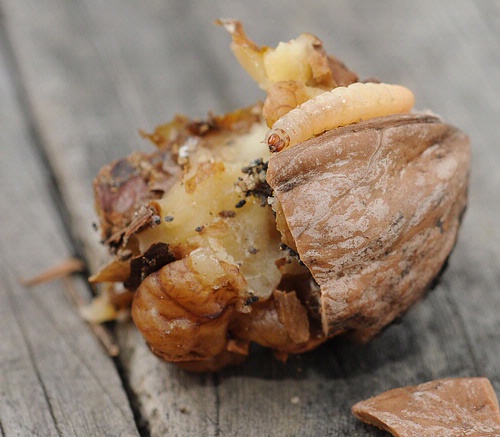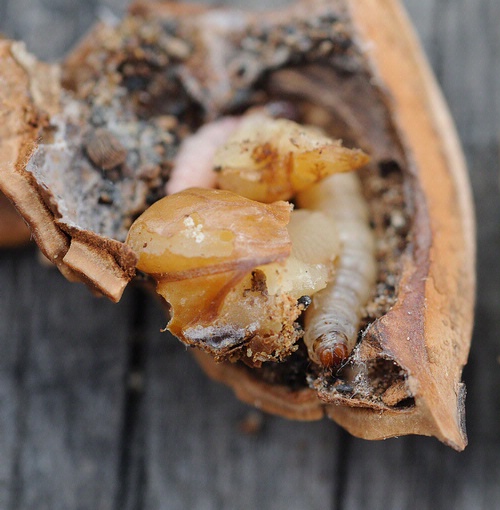- Author: Kathy Keatley Garvey
They're not exactly cute, cuddly little critters.
Some folks say they look like miniature alligators or "ugly, spiky orange-and-black buggy thingies."
Many a novice gardener has glanced at them, smashed them, and yelled "Gotcha! Now stay outta my garden, y'hear?
What they killed were the larvae of lady beetles, aka ladybugs (family Coccinellidae). They're beneficial insects, the good guys (and gals). Both the adults and the larvae of lady beetles feast on aphids and other soft-bodied insects such as scales and mites.
They are not your enemy.
And if there are kids in your family, show them this time-lapse video of the Ladybug Life Cycle by TSST. That would be "The Kid Should See This."
"One ladybug can eat up to 5,000 insects in its lifetime!" says TSST. "Most ladybugs have oval, dome-shaped bodies with six short legs. Depending on the species, they can have spots, stripes, or no markings at all."
Spoiler alert: You can't say that "no animals were harmed in the making of this video." Yes, there's some cannibalism. It's not good to be the last egg hatched.
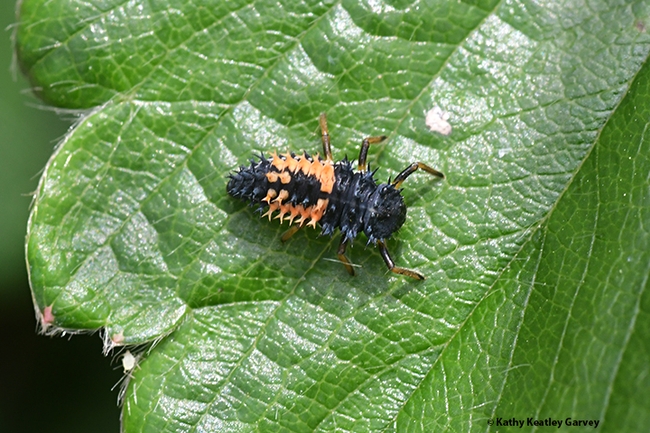
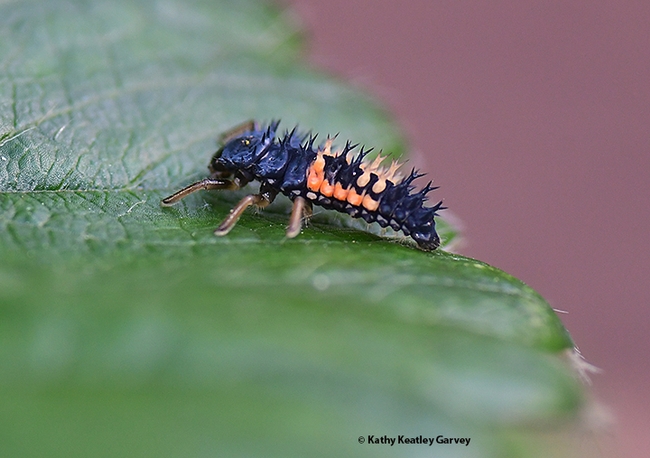
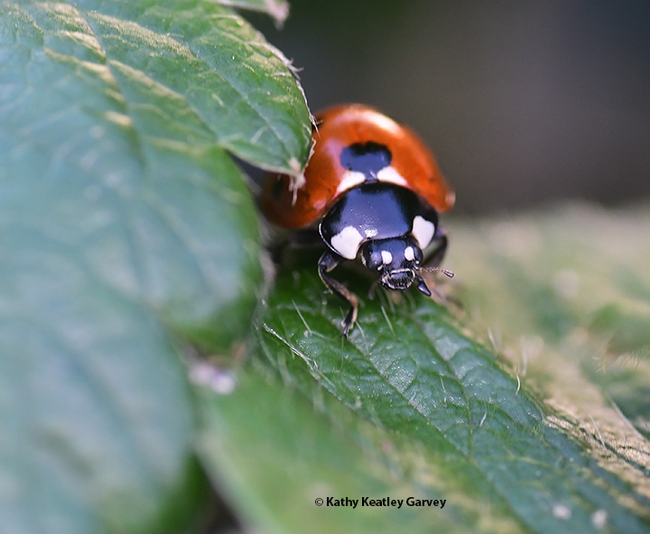
- Author: Kathy Keatley Garvey
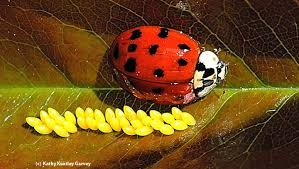
Have you ever heard anyone say that when they see the larva of a lady beetle (aka ladybug, family Coccinellidae)?
Unfortunately, it's quite common among non-gardeners and non-insect enthusiasts.
The larvae of lady beetle are mostly black and look like tiny, spiny alligators, but they're beneficial insects just like the adult lady beetles. In the adult and larval stage, they're both predators that prey mainly on aphids, but they'll also eat thrips, spider mites, scale insects, and other soft-bodied insects.
An adult lady beetle can eat as many as 5000 aphids in its lifetime, scientists say. Who knows how many a larva can eat! Who's counting?
"Young lady beetle larvae usually pierce and suck the contents from their prey," according to the UC Statewide Integrated Pest Management Program's website. "Older larvae and adults chew and consume their entire prey. Larvae are active, elongate, have long legs, and resemble tiny alligators."
You've seen lady beetle jewelry and t-shirts and the like (check out the gift shop at the Bohart Museum of Entomology at UC Davis, located in Room 1124 of the Academic Surge Building on Crocker Lane), but the larvae? They aren't represented.
They're well represented in many gardens, however. In our garden, the adults and larvae are polishing off the oleander aphids on our milkweed plants.
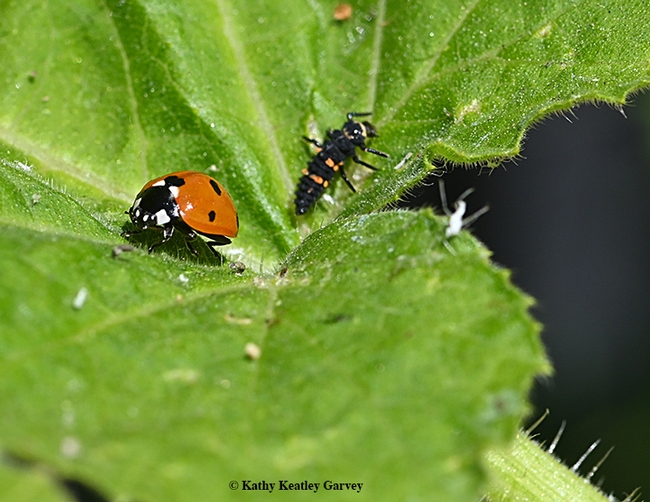
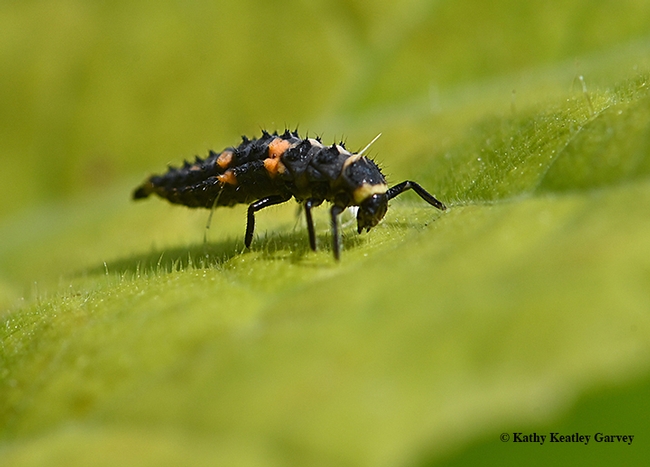
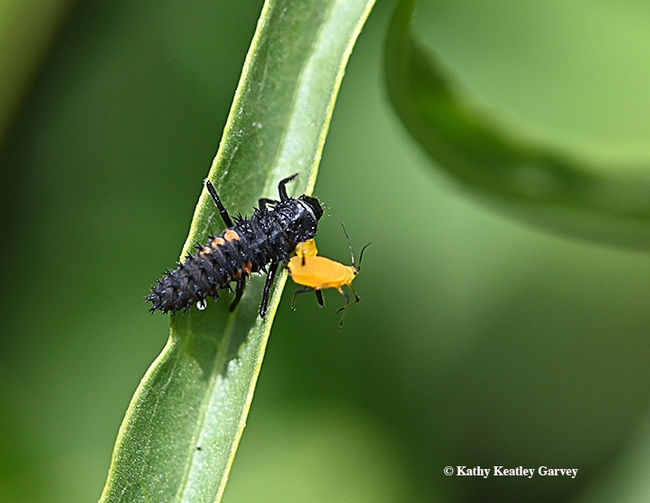
- Author: Kathy Keatley Garvey
Can the larvae of lady beetles (aka ladybugs) eat aphids?
Yes, they can. And yes, they do.
We spotted some lady beetle larvae on our yellow roses today and guess what they were doing? Right, eating aphids. Eating lots of aphids.
The larvae look a little like miniature alligators, which is probably why they're often mistaken for pests.
Oooh, what's that weird-looking thing on the roses? It can't be good. Kill it!
Sadly, that's what many people do.
Lady beetles (family Coccinellidae) are beneficial insects that gobble up aphids, mites, scales and other soft-bodied insects. Check out the Quick Tips on the UC Statewide Integrated Pest Management Program (UC IPM) website for more information and photos.
And, be sure to attend the 103rd annual UC Davis Picnic Day on Saturday, April 22. It's "open house" throughout the campus. At Briggs Hall, the UC Davis Department of Entomology and Nematology and UC IPM will answer your questions about insects (as will scientists at the Bohart Museum of Entomology in Room 1124 of the Academic Surge Building). (See news story.)
Bugs. Briggs. Bohart. What could be better? Well, youngsters visiting the UC IPM booth at Briggs Hall are in for a special treat: they will be gifted with lady beetles to take home. Watch out, aphids!
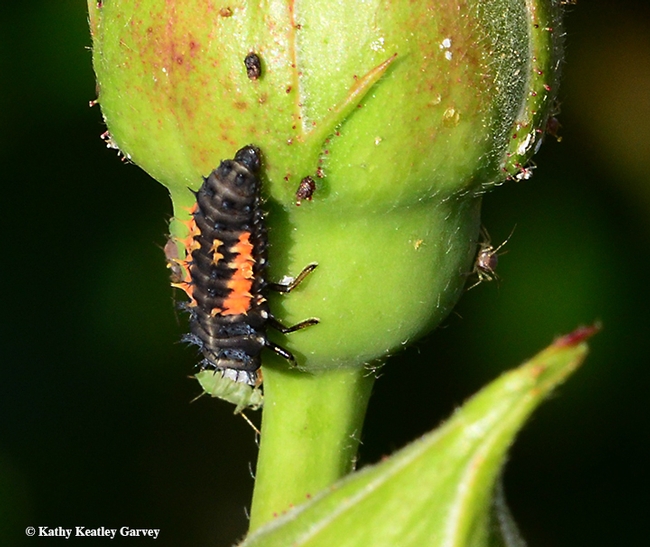
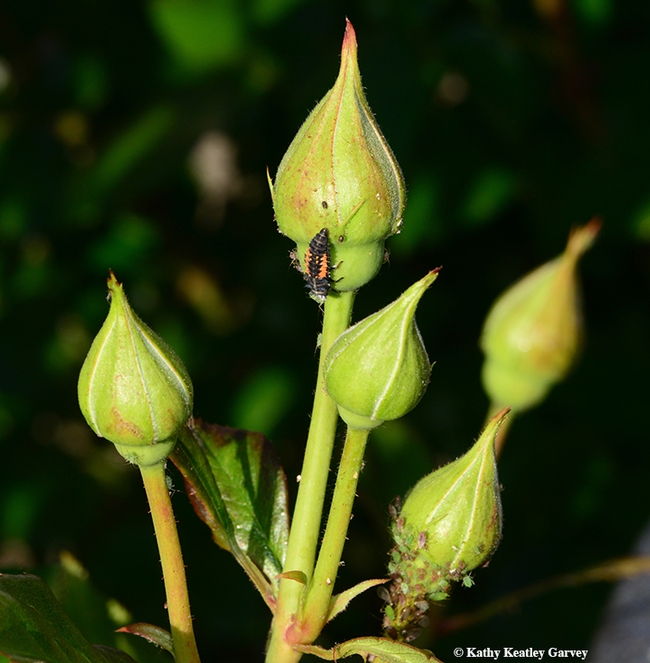
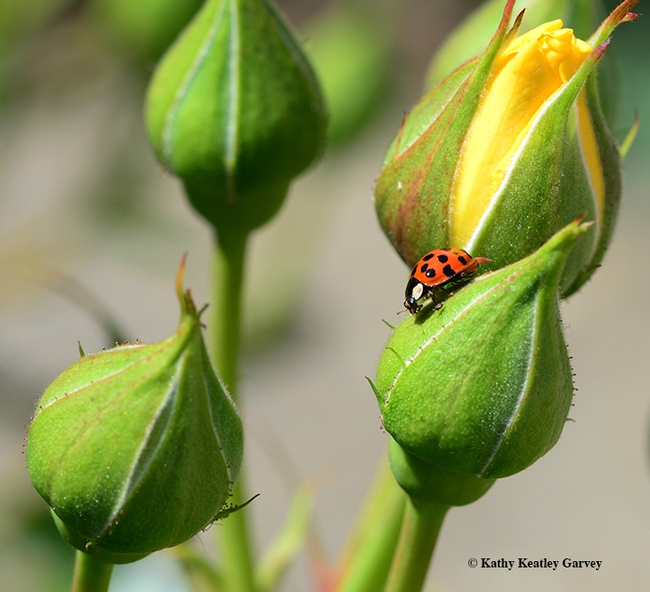
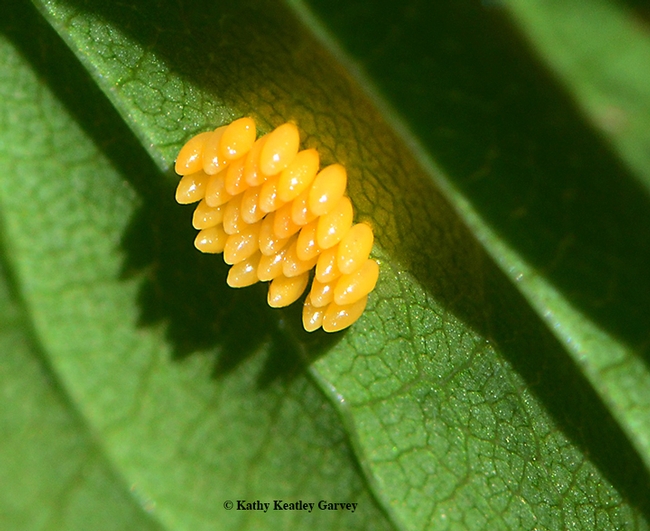
- Author: Kathy Keatley Garvey
Walnuts are packed with vitamins, minerals and antioxidants, right?
Right.
And sometimes a little protein.
Protein, as in larvae. That's not a welcome sight.
Sometimes you'll find two or three navel orangeworm (NOW) larvae inside a single walnut, along with copious amounts of webbing and frass.
We once stored a bucket of untreated walnuts inside a vacant outbuilding. By spring, we had larvae crawling up the walls and moths trying to find an opening and us trying to find our sanity.
Last weekend I went on The Great Navel Orangeworm Search. I collected three walnuts that had fallen onto the sidewalk. Two of the walnuts were perfect. Drats!
Ah, but when I cracked open the third, I spotted the larvae.
Three larvae inside the third walnut on the third of January at 3 o'clock in the afternoon.
UC Davis entomology professor Frank Zalom said the best way to tell if the larvae are navel orangeworm is "to check for the presence of a crescent-shaped marking on the sides of the second segment behind the head."
The larva of the codling moth doesn't have this marking.
NOW is no friend of walnut growers. The moths deposit their eggs inside the mummy nuts--the ones left on the trees after a harvest--or the fallen nuts. Next season: more trouble. Economic trouble.
A pest of both fruits and nuts, NOW was first found in navel oranges; thus the name.
As for the three larvae I found inside the walnut, as soon as I split the hull, they were off and running.
Or rather, off and crawling.
